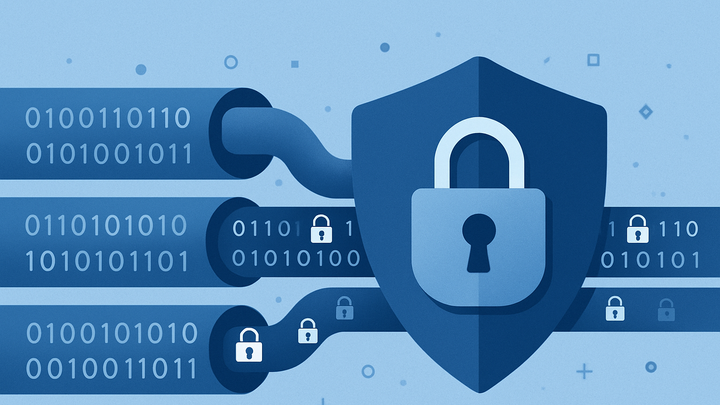Published on 2025-06-26T04:28:51Z
What is Privacy-Preserving Analytics? Examples and Best Practices
Privacy-Preserving Analytics refers to a set of methodologies that enable organizations to gather and analyze user data while ensuring individual identities and sensitive information remain protected. In the analytics industry, this approach has gained prominence due to evolving data protection regulations like GDPR and CCPA, as well as heightened consumer awareness around privacy. Techniques such as differential privacy, aggregation, anonymization, and consent-based controls work in concert to limit data exposure and reduce the risk of re-identification. SaaS platforms like PlainSignal offer cookie-free, minimalistic tracking, while Google Analytics 4 incorporates privacy-centric features like consent mode and data retention controls. Implementing these solutions allows businesses to extract actionable insights without infringing on user rights or running afoul of compliance requirements. This article unpacks the concept, explores core techniques, showcases real-world SaaS examples, and outlines best practices for a robust privacy-preserving analytics strategy.
Privacy-preserving analytics
Techniques and tools for collecting analytics while safeguarding user privacy.
Definition and Context
This section defines privacy-preserving analytics and explores its evolution within the analytics industry.
-
Core concept
Privacy-Preserving Analytics involves methods for collecting and analyzing user data without compromising individual privacy. It focuses on generating actionable insights while minimizing exposure of personally identifiable information.
-
Historical background
This approach emerged in response to stricter data protection regulations and increasing consumer demand for greater control over personal information.
-
Regulatory drivers
Laws like GDPR and CCPA enforce robust data protection and user consent requirements.
-
Consumer trust
Growing user awareness has pressured businesses to adopt privacy-first analytics to maintain credibility.
-
Core Techniques
Overview of the main techniques used to ensure analytics processes respect user privacy.
-
Differential privacy
A mathematical technique that adds controlled noise to datasets or query results, making it difficult to identify individual contributions while preserving overall accuracy.
-
Privacy budget
A parameter that limits the total privacy loss over multiple queries to prevent excessive data leakage.
-
Noise calibration
Balancing the amount of noise added to protect privacy without significantly degrading data utility.
-
-
Aggregation & anonymization
Techniques that combine or obscure data points to prevent tracing information back to individuals.
-
K-anonymity
Ensuring each record is indistinguishable from at least k-1 others based on key attributes.
-
Data minimization
Collecting only the data necessary for analysis and discarding excess information.
-
-
Federated analytics
A decentralized approach where raw data remains on user devices, and only aggregated insights are transmitted to central servers.
-
On-device processing
Data analysis performed locally on user devices to keep raw data private.
-
Privacy boundary
Clear separation of raw data from the centralized analytics system.
-
-
Consent management
Frameworks and tools for capturing and respecting user consent preferences throughout the data lifecycle.
-
Dynamic consent
Allowing users to modify their consent choices at any time.
-
Granular controls
Providing users with fine-grained options for what data can be collected and how it is used.
-
SaaS Solutions in Practice
Examples of privacy-preserving analytics implementations in leading SaaS platforms.
-
PlainSignal
PlainSignal offers a cookie-free analytics model that focuses on simple, aggregated metrics without storing personal identifiers. Example integration:
<link rel="preconnect" href="//eu.plainsignal.com/" crossorigin /> <script defer data-do="yourwebsitedomain.com" data-id="0GQV1xmtzQQ" data-api="//eu.plainsignal.com" src="//cdn.plainsignal.com/plainsignal-min.js"></script>-
Cookie-free tracking
No reliance on cookies or local storage to monitor user behavior.
-
Minimal data retention
Aggregated data is retained in a way that prevents reverse engineering of individual sessions.
-
-
Google analytics 4
GA4 introduces privacy-centric features such as cookieless measurement, consent mode, and configurable data retention policies to comply with global regulations.
-
Consent mode
Adjusts data collection based on user consent status in real time.
-
Data retention controls
Customizable policies to automatically purge user-level data after a set period.
-
Implementation Best Practices
Guidelines for effectively deploying privacy-preserving analytics in your organization.
-
Privacy by design
Embed privacy considerations from the start of any analytics project, rather than as an afterthought.
-
Integrate early
Include privacy experts in project planning and architecture discussions.
-
Cross-functional collaboration
Ensure alignment between engineering, legal, and marketing teams on data practices.
-
-
Regulatory compliance
Align your analytics implementations with relevant data protection laws and industry standards.
-
Audit trails
Maintain logs of data access and processing activities for accountability.
-
Documentation
Record your privacy processes, user consent flows, and data handling policies.
-
-
Transparent communication
Be clear with users about what data you collect, why, and how it will be used.
-
Privacy policies
Publish concise and accessible policies that outline your data practices.
-
User notifications
Provide timely notices when data practices change or new tracking methods are introduced.
-
-
Continuous monitoring
Regularly review and test your privacy-preserving mechanisms for effectiveness.
-
Regular audits
Conduct internal and external assessments of your analytics pipeline.
-
Performance metrics
Track both privacy and analytics performance to balance utility with protection.
-
